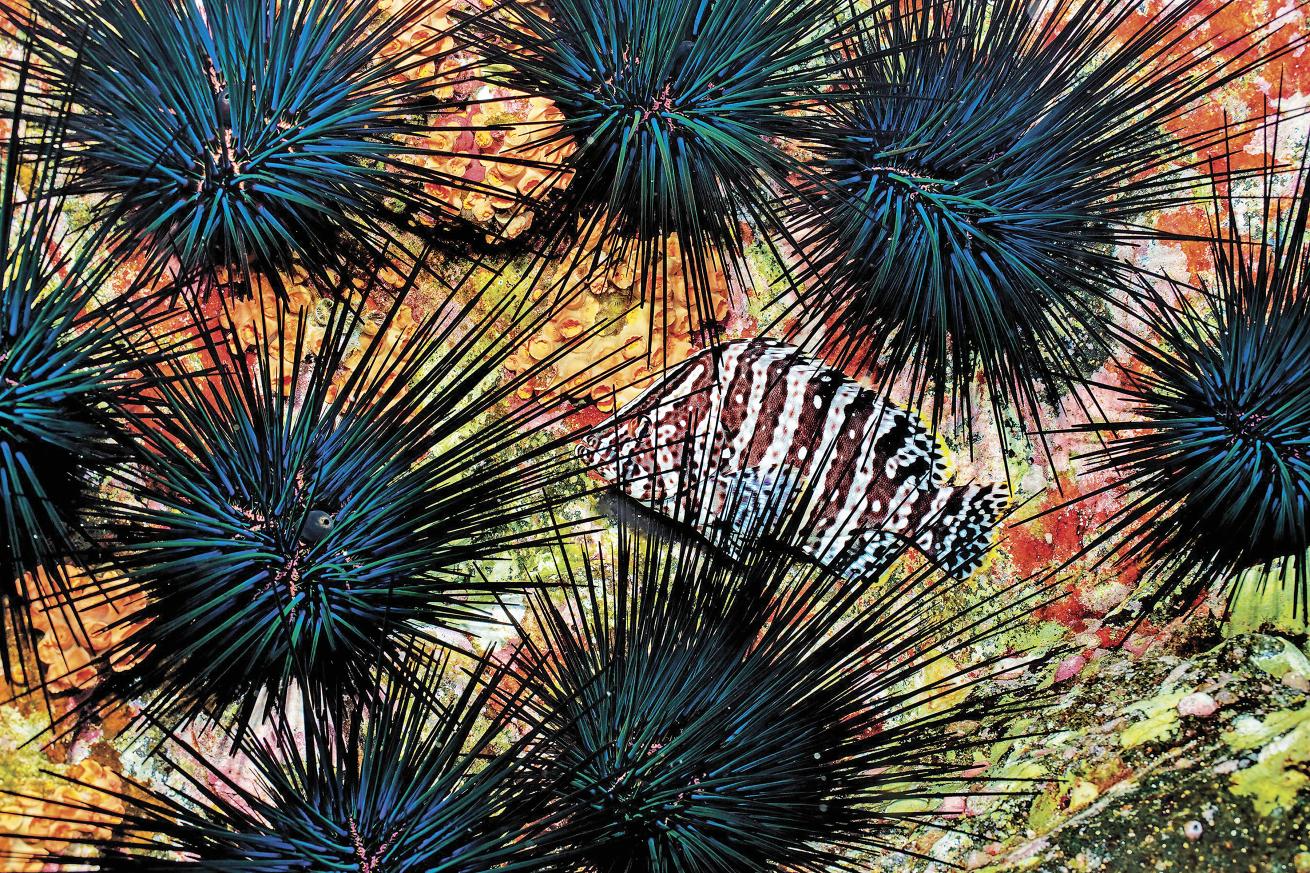How to Avoid and Treat Sea Urchin Spine Injuries

COURTESY DANSea Urchins
I love plants almost as much as I like diving. A recent addition to my plant collection is a small air plant that pokes out from under an old sea urchin shell. Looking at this shell got me thinking about some of the marine life that we may encounter while diving. Although marine creatures are mesmerizing and a major reason many of us dive, they can also pose significant hazards to unwary divers. Understanding how to avoid, identify and treat these injuries is crucial for a safe and enjoyable diving experience.
Sea Urchins As A Hazard
Sea urchins are animals that are closely related to sea stars and sea cucumbers. They inhabit all the world’s oceans and can be found at numerous depths including tide pools and entrances to dive sites. Their bodies are covered in long, sharp spines that serve as a defense mechanism against predators. While not used offensively, these spines can easily penetrate human skin even with some protection from rash guards, wetsuits and booties if accidentally stepped on or brushed against. Some species of sea urchins carry venom in their spines and pedicellariae (small pincer-like appendages).
Related Reading: Dive Accident Insurance: What You Need to Know
What Can I Expect From A Sea Urchin Injury?
Sea urchin injuries typically present as clusters of puncture wounds from the numerous spines. The spines often break off and remain trapped in the skin, causing significant pain, redness and swelling. In rare cases, wounds from species that carry venom may cause numbness, paralysis, respiratory distress or death. If left untreated, infections may develop. Although most cases are not serious and can heal within a few weeks with proper treatment, these spines may become encapsulated and cause long-term damage if not removed.
Anti-inflammatory medications and hot water soaks may help to reduce pain. Vinegar soaks may help dissolve some of the spines. Wash the area carefully with soap and water while avoiding irritating any spines.
How Are Sea Urchin Injuries Treated?
Initial first aid includes the removal of superficial spines. Tweezers can often help, although care should be taken not to squeeze too hard to avoid breaking the brittle spines. Anti-inflammatory medications and hot water soaks may help to reduce pain. Vinegar soaks may help dissolve some of the spines. Wash the area carefully with soap and water while avoiding irritating any spines. Do not cover the wounds, as covered puncture wounds may increase the risk of infections such as tetanus. A medical professional can provide a tetanus shot and help to remove deeply embedded spines. Spines embedded deep in the muscle or near joints may require surgical intervention.
Related Reading: In the Field: What It's Like to Be a Commercial Urchin Diver
How Can I Avoid Sea Urchin Injuries?
When entering the water, be careful where you step! Urchins often like to reside in small cracks or ledges, so only step where you can see. If it is difficult to see where you are stepping, consider shuffling your feet along the bottom to avoid stepping onto an urchin. This technique can also reduce your likelihood of stepping on a stingray, which can also result in injury. Thicker soled booties or rock boots can provide some level of protection, but there is still a chance a spine can penetrate them. As a general rule of thumb, avoid touching any marine life and maintain neutral buoyancy to avoid contact with hazards. Additional information on hazardous marine life can be found in Divers Alert Network’s Hazardous Marine Life book. Also consider upgrading your overall first-aid skills with DAN’s First Aid courses.
Although there is a potential risk of injury while diving, I believe that awareness and respect for marine environments can go a long way in preventing accidents and ensuring that your diving experiences remain enjoyable and safe. Always be mindful of your surroundings and the creatures that inhabit them—for your safety and theirs!










